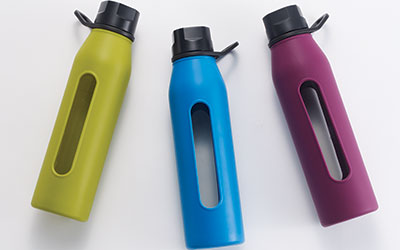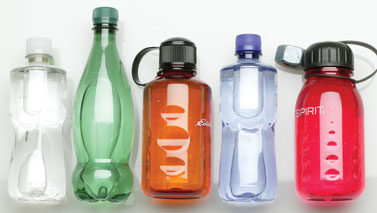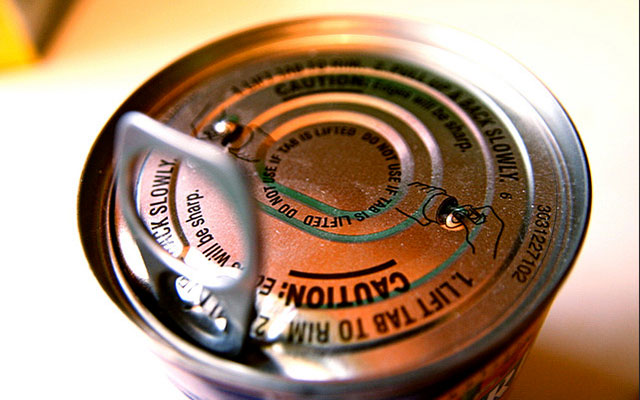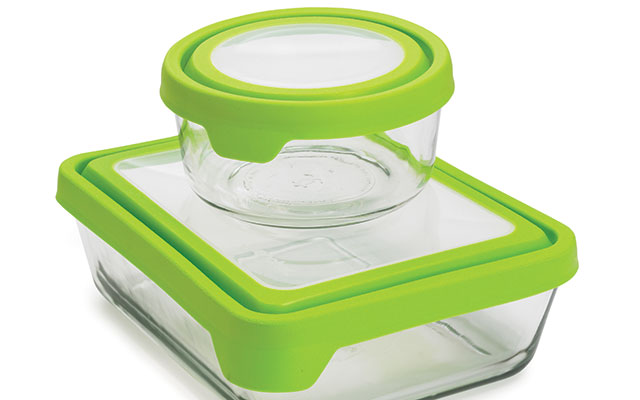Unless you’ve been living out on the “Great Pacific Garbage Patch,” you’ve likely heard of bisphenol-A (BPA), a carbon-based synthetic compound used to make various plastics and epoxy resins. BPA is an endocrine disruptor, which means it can act like a hormone in the body, and has been linked to a variety of health concerns involving thyroid function, neurological development and behavior, reproduction, metabolic syndrome, cancer, and heart disease. The good news is there are many things you can do to reduce your exposure to BPA — and that once you do, the levels in your body decrease quickly. In an upcoming Experience Life article, Margret Aldrich reports on a recent study that found when participants followed a BPA-free protocol, their levels plummeted by 66 percent in only 72 hours.
To help increase your BPA awareness, here’s a list* of some surprising places you’ll find BPA, along with a few shifts you can make to avoid it:
-
- Can the canned goods, such as canned foods, soda, and beer. (Even organic canned foods may contain BPA so choose brands that indicate they use BPA-free containers).
- Take care when canning your home-grown harvest as some canning jar lids and rings may contain BPA in the lining.
- Avoid type 3 and 7 plastics (look for the recycling symbol on plastic items). These include many baby bottles, sippy cups, store-bought bottled water, and many office-delivered water cooler bottles.
- Switch from plastic to glass food-storage containers. Glass is safer for microwaving as well.
- Switch from drinking bottled water to filtered tap water.
-
- Transport your own filtered water in stainless steel, silicone, glass, or bamboo water bottles.
- Ask retailers to “cash in” their register receipts to protect the safety of their customers and workers by switching to BPA-free or electronic receipts (from companies like SquareUp).
- Before you say “ahhh” at the dentist, ask if they use BPA-free dental sealants; if they do, consider switching to a holistic dentist.
- Avoid beer and wine that have been fermented in BPA-resin-lined vats. Contact your favorite brand directly to ask about their fermentation process.
- Ditch the to-go and carry-out containers from your favorite restaurant or pizza shop. Many styrofoam containers and pizza boxes, including those made of recycled cardboard, contain BPA.
- Consider using alternatives to paper products, as even toilet paper and many recycled paper products contain BPA. Alternatives include cloth and bamboo cleaning towels.
- Make your own or read the labels on your personal-care products and cosmetics carefully: Many contain BPA, parabens, and other not-so-friendly ingredients.
- Avoid using plastic and paper cups like those often found in cafeterias and restaurants: The inside lining often contains BPA. If you have a choice, ask for glass, a ceramic mug, or bring your own reusable drink container and fill it up instead.
- Check the plastic toys you give your children: If you see a #7 on a toy, it contains BPA.
- Brew and blend with coffee makers and blenders that don’t have parts made of plastics.
- Don’t assume that items claiming to be BPA-free are safe.
Watch for more tips on reducing your exposure to BPAs in our September 2014 issue, including tips for brewing a smarter cup of coffee. Looking to do more to reduce your exposure? Contact your legislators, the FDA, and the EPA, and ask them to join other countries in banning the use of BPA and BPA replacements. *NOTE: This is by no means a comprehensive list of BPA-containing items. If you’re unsure about whether an item you’re using contains BPA, we recommend contacting the producer and doing additional research.




This Post Has 0 Comments